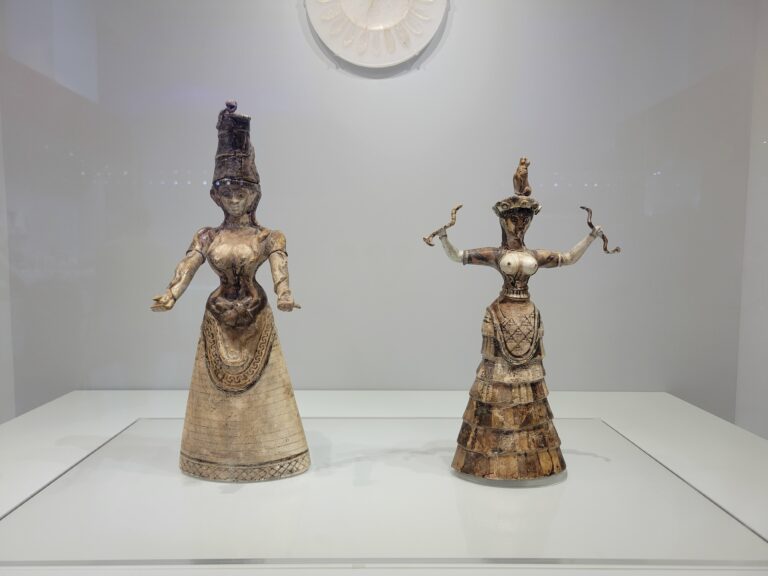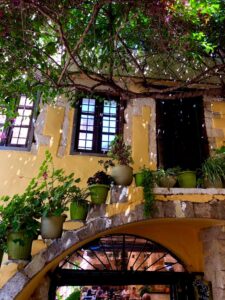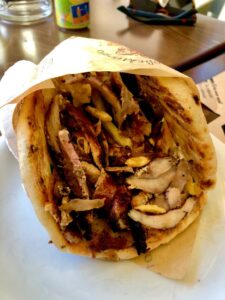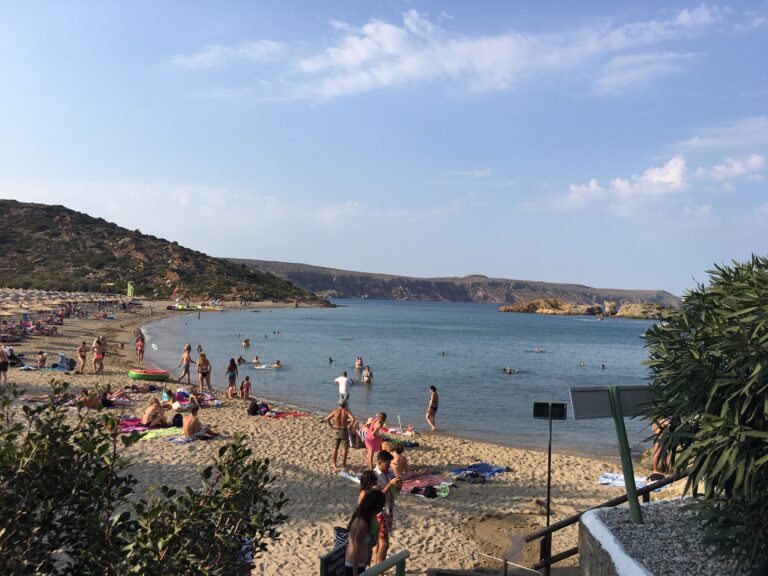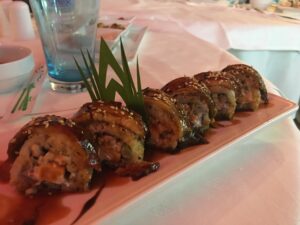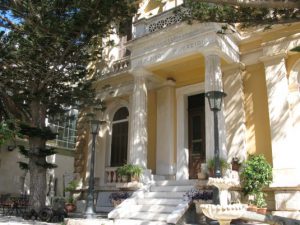I was not one to be sentimental about heritage when I was a child.

This was, more or less, by design. My family wanted me to concentrate more on the present than the past, except of course when it came to the study of historical personages who did things of note. I wrote family tree projects with the cold lens of an academic, and the idea of ancestry became so far removed from me that it was more like examining the history of a stranger rather than analyzing myself. I was a mutt, without a past, without roots, without ancestors. For the most part this was not an issue, and my love of history was no less strong.
Which brings me to the grand epiphany I experienced in the Archaeological Museum of Crete.
There is a reason why this museum is on every “Best Thing to See in Crete” article in existence; it is home to antiquities of the most unique nature. It is one of the oldest museums in Greece, home to collections that began before the formal construction of the museum. The Archaeological Museum contains artifacts from every pivotal evolution for the Minoan people spanning the last 5,500 years, neatly placed into 12 expansive rooms on the first floor alone.
The Minoans were the first real civilization on the island of Crete, emerging from the neolithic population that first inhabited it. They were the Bronze Age powerhouse, with a formidable navy, a rich artistic tradition that went through several evolutions, and a complex and intricate religious system that archaeologists are still unearthing new details about. They were the epicenter of trade, connecting the Hellenic peoples of mainland Greece with Cyprus, Egypt, Syria, Anatolia, and Mesopotamia. They weren’t just the first inhabitants of Crete, they were Crete.
Upon entering the museum on a hot July afternoon, I found myself taken by the sudden weight of how old the Minoan civilization truly is. I have been to this museum many times before, but something about this visit struck me as particularly meaningful. The stone basins that they used for ritual cleaning, the delicate golden jewelry that is carefully displayed, even the little clay bulls all on display, were made by human hands so long ago I could not completely wrap my head around it.

I forgot to breathe as I stared at the famous Bee pendant, which was unearthed at the archaeological site of Malia in 1930. It is an intricate depiction of two bees (or wasps), each curved to form a semi-circle, meeting at their heads and stingers respectively. Three gold orbs hang from each wing and their connected stingers, and a circle of gold (perhaps meant to symbolize a fruit) sits between them. The piece is beautiful, and time was clearly spent carefully accounting for each detail in the textured wings and bodies of the bees. The realization that this was made by human hands, loving, careful hands, hit me like a train. Who had worn this pendant? Whose hands first undid the clasp and hooked it about their neck? Was it a gift? A purchase? A tribute to a ruler? ‘Who were you?’ I wondered, looking at every piece of jewelry that lined the glass cases.

Then there was the Phaistos disc, discovered at the Phaistos palace ruin in 1908. It is an unassuming object, a dull brown circle with a diameter not much bigger than my outstretched hand, (5.9 inches to be exact). It’s not in the cases that line the walls, but on its own encased pedestal in the center of one of the rooms. On each side of the disc, etched symbols follow a spiral pattern into the center of the disc, forty-five pictorial signs that are repeated and grouped in sixty-one different segments, on both sides of the disc. Is it a song? A hymn? A spell? Perhaps we will never learn the truth, as the disc is written in Linear A, and is still being deciphered. The placard on the pedestal dates the Phaistos disc to the early 17th Century BC. Yet again I found myself confronted with the almost uncomfortable fact of time, and simultaneously, how a human hand had carefully and expertly shaped and carved this little mystery.
Perhaps my favorite thing about the Archaeological Museum of Crete is how much art it showcases. There is something so intrinsically human about being an artist, and I think it is a testament to the Minoans that so much of their art has survived. A marvelous sculpture of bull-jumpers mid-leap represents the first time that art depicted motion in a three-dimensional space. I wondered if the artist knew they were the first, or if they had, like all artists, assumed someone had beaten them to it.

Just next to this statue is the famous bull-jumper fresco, depicting three jumpers, two female and one male, participating in the sport. One woman grabs the deadly horns of the charging bull, preparing to propel herself into the somersault. Her eyes shine with the confidence of an expert sportswoman, cautious but unafraid. The man is halfway through his leap, his hands spring boarding off the bull’s mighty back, his body moving on autopilot. The second woman stands behind the bull, arms outstretched in triumph, having just completed her leap. The bull remains forever in his forward momentum, ever charging, his brown and white coat standing out vividly against the bright blue background of the fresco. Out of all the frescos that once called the Palace of Knossos home only to reside in this museum, I think this is the most beautiful. There is a triumphant nature to it, not a mastery of nature but perhaps a mastery of the self; total control over one’s body is the only way to survive a bull-jump.

Only two rooms later, I found myself staring at the ‘Ring of Minos,’ a small golden ring engraved with the Minoan Epiphany Cycle. Dating somewhere between 1450 and 1400 BC, the golden ring depicts the Goddess, the primary deity that was worshipped by the Minoans for the majority of their existence. She exists in three forms: hovering in the air, on a platform that is also holding Horns of Consecration (which visitors of Knossos will recognize as the giant statue of Bull’s Horns that faces the mountains), and rowing a boat beneath a fruit tree. The goddess, and by default the Minoans, have dominion over air, land, and sea, and all who beheld the ring were meant to recognize this as fact.
When I first laid eyes on the ring, I was suddenly met with a fierce rush of emotion, and tears threatened to escape my eyes. I was taken aback by this. Though beautiful, the ring is quite small, and not the only ring on display in the case. But something about it touched me, and I was forced to quit the area before I embarrassed myself. When I visited the museum again a month later with a friend who had never been before, I was surprised to feel the wave of emotion flow over me again. Once again I left to explore the other artifacts as I let the feeling pass. I never figured out the reason why I was so affected. Maybe I don’t need to.

But perhaps the most striking thing about this museum is how much of the collection revolves around death as much as life. A sizeable portion of the museum is devoted to the Minoans’ burial practices, showcasing how they evolved as their civilization progressed. Jars specifically made to hold anointing oils for burial, tools to carry out burial ceremonies, and funerary reliefs reveal insights into how the Minoans cared for their dead. I was particularly struck by the examples of several Protopalatial, Neopalatial, and Final Palatial tombs, especially the large clay pots that housed skeletal remains of what was once a fellow human being. There is something to be said about the way a civilization cares for its dead. The Minoans, in most stages of their existence, took great care and reverence in burials. Staring at the visible skeleton that was laid to rest in one such great jar, I felt it spoke great volumes that, thousands of years later, evidence of this care still remains. I was one of thousands who came before that followed in the grand tradition of paying my respects to the noble dead.
I could write a book on all the wonders held by this museum. Several people already have. I could talk of the Snake Goddess, of the bull heads, the toys, or the effigies. I could go blue in the face exalting the historical importance of the collection in the cold and clinical academic context. Better men and women than I have long since beaten me to it. I have been to this museum several times in my life, but walking through those rooms on that hot July day, it finally became real to me that the Minoans did not exist in an abstract. The Minoan people filled their days with creating art, raising families, honoring their gods, waging war. They led the way of commerce in the Mediterranean and created a civilization rich with an art and culture worth remembering. They built homes and palaces, storefronts and temples. They built a life. Like I’m trying to. Like you, most likely, are trying to.

I still do not feel any strong ancestral tie. I do not feel as if I ‘belong’ in any place or among any people specifically. I don’t expect that to change, and I don’t know if I need it to. But what I feel instead is the commonality that spans across millennia to connect us as human beings attempting to turn our little lives into something worthy of remembrance.
And that is a tie I will cherish forever.
By Katarina Kapetanakis

